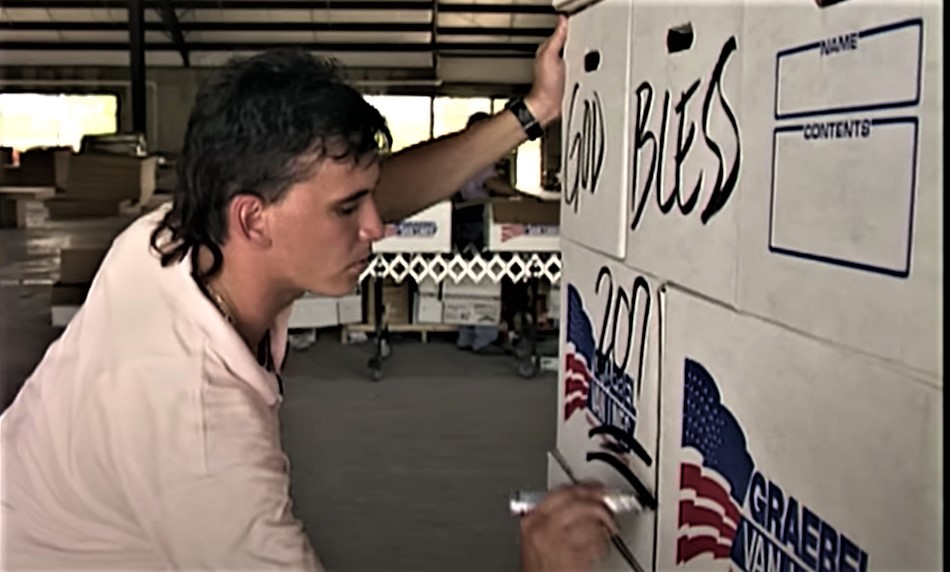A massive leveling has commoditized advantages…
Once there was a time when world-class marketing, by definition, was expensive. Bigger brands enjoyed advantages by way of larger marketing and media budgets that smaller players just couldn’t muster. A price of entry existed for superior production values and more cinematic forms of storytelling.
Those barriers have disappeared. What do you do when anyone, anywhere can compete with you on the quality of communication? What happens when the budgetary obstacles to outreach evaporate and anyone from anywhere can distribute high quality, engaging content? What unfolds when the importance of reaching mass audiences served by mass (expensive) media vanish because markets have bifurcated into smaller tribes of consumers who elect and select the brands they care about “joining?”
Read on to understand the shift in competitive advantage and where to go when a bigger budget doesn’t necessarily author any marketplace leverage.
Seth Godin marked the change beautifully in a recent post:
“To make an album of music good enough to make it to the Top 40, it used to cost a million dollars. Now you can do it in your bedroom.
To make a commercial for network TV, a minute of footage cost about a million dollars…
And that same million was what it would cost to create an email engine for permission-based marketing in 1996.
And you needed a million dollars to build a website that could hold up under a lot of traffic, or to build a social media presence that would reach a million people.
All of these things are now incredibly cheap.”
Remarkably, many brands and businesses still operate as if these big wallet advantages exist – assuming the consumer marketplace will absorb their content before, above, beyond and more often than anyone else’s (as if repetition helps in an avoidance-enabled market). Just. Not. True.
A seed funded CPG food start-up or small footprint retailer is capable of producing a more impactful, useful and engaging web site than a large cap CPG brand or 1,000-door retail banner. Of note, capable is just that – there’s no inherent win from being small and new either. Same with video content. Same with social channel engagement. The entire competitive advantage paradigm has shifted from the few Goliaths to the many Davids.
What happens when technology and culture conflates the company size and budget advantages?
The big strategic question that must be factored into planning: what are the new rules of strategic advantage when everyone can compete with anyone?
- The stakes on uniqueness and differentiation are amped and marginal distinctions constitute nearly zero brand leverage.
- The requirement for deeper meaning, mission, higher purpose and values – your “why” – form the foundation of any strategic advantage. Based on our surveys, this foundation is more than likely under-served.
- Putting the consumer at the center of brand narrative and communication strategy is now table-stakes to any hope of engagement.
- The humanization of your brand proposition and marketplace behaviors is a prerequisite to achieving relevance and resonance.
- Your digital footprint must revolve around “romance” of the consumer’s lifestyle aspirations, needs and wants before any relationship can be successfully secured.
- Larger brands don’t own any advantages here. Smaller brands don’t get a hall pass for being “nimble” (no one owns speed) or conceptually more authentic because output looks raw and amateur-ish.
The requirement for trust is universal and bigger brands don’t inherit that quality
“We’ve been here for 40 years” does not mandate trust. Reciting reasons intended to convince people you’re trustworthy doesn’t work because trust is not achieved through data or facts.
Bigger may reduce the perceptions of any risk in purchase as a business moves to the late stages on the adoption curve. That said it can also be a slippery slope to irrelevance, too.
Importantly, any “risk” attached to what is new and innovative can be managed with the right trust-building strategies and performances.
Over the last few weeks, we’ve seen close-up exciting new product concepts and nuances of evolutionary innovation that could potentially disrupt existing food and beverage categories. Yet the truth of the matter – there are also emerging brand communication efforts that are neither emotionally resonant nor fully dialed into consumer relevance.
- We have ample proof that while a level playing field exists, guidance and sound strategy are needed no matter the size of the business from $1 million in trailing revenue to $1 billion.
The large brand paradox
Larger brands have greater challenges due to hide-bound traditions and inertia that moves against change.
“We’re too big to fail”
“We’ve always done it this way”
“Our growth is aligned with the category performance”
“We can’t (won’t) change the foundational aspects of what authored our original success”
“Wall Street won’t like it if we do anything radically different”
“We have significant costs sunk in our supply chain infrastructure”
“We already have high levels of brand recognition and awareness”
“What if we (read: I) fail”
Trust must be won daily. Brand equity dilution, decline and commoditization challenges are like laws of gravity and cannot be side-stepped. Ceding category territory to smaller creations may not feel like a contest initially because many leaders believe you can “buy” your way in. Yet we recognize that post-acquisition there will be risks of diluting the golden goose’s brand magic.
The new rules of engagement
Anyone, anywhere can outflank and beat well-funded competition on message relevance and quality communication. That means emotionally on-point, consumer-centric communication is fundamental no matter who you are, big or small.
- Higher purpose, mission and values are the foundational elements of trust creation and any player in a category is either served or hampered by this requirement.
- You have to get out of your own way.
- Size is not insulation and creates other significant challenges that operate in favor of reinvention and renewal – when change is often resisted.
- Disruption and differentiation are required when sameness is rampant everywhere and traditional category behaviors can dumb-down any perceived uniqueness.
- There are far too many bigger brands that lack humanity in how their story is packaged and presented.
The beauty of a level playing field
For larger brands, this means potential repositioning and savings on the marketing budget line because throwing “money at it” doesn’t really get you there. This forces the importance of innovation, relevance, meaning and values that are the hallmarks of competitive advantage in the relationship economy era.
For smaller brands, you are not at an automatic disadvantage based on size. You can compete. Effectively. However, the requirement for world-class storytelling and engagement strategies remains as the price of entry. Are you prepared for it?
In the famous Pixar movie about a culinary genius rat named Ratatouille, we learn the story arc’s basic premise, “anyone can cook” – provided the right inspiration, effort, energy, focus and desire to learn exist. So, too, in the era of relationship-based marketing. We can return to focusing on the consumer and our storytelling chops, knowing that we can make a difference, and we can win in the marketplace for all the right reasons!
If this story stimulates some thinking that you would like to share with like-minded brand builders who can add value to your internal strategic conversations, use this link to start an informal dialogue.
Looking for more food for thought? Subscribe to the Emerging Trends Report.
Bob Wheatley is the CEO of Chicago-based Emergent, The Healthy Living Agency. Traditional brand marketing often sidesteps more human qualities that can help consumers form an emotional bond. Yet brands yearn for authentic engagement, trust and a lasting relationship with their customers. Emergent helps brands erase ineffective self-promotion and replace it with clarity, honesty and deeper meaning in their customer relationships and communication. For more information, contact [email protected] and follow on Twitter @BobWheatley.







